Лечение визга тормозов по версии Pinbike
24.08.2013 в 15:58 (14646 Просмотров)
Tech Tuesday - Silence That Squeaky Disc Brake
[FONT=Arial]Jan 10, 2012
[/FONT]
[FONT=Arial]by Richard Cunningham
Follow Add to Favorites
[/FONT]
[FONT=Arial]
Everyone has had a day when their brakes howl like monkeys and, unless you happen to be a monkey, a persistent howler can take the fun out of a day's ride - or worse, announce your poaching whereabouts to nearby not-so-bike-friendly uniformed forest inhabitants. Before you become angry or incur another's anger again, silence those stoppers with this week's Pinkbike's Tech Tuesday disc brake how-to.
We accidentally lubricated this brake with chain lube and were awarded with a howler on the following ride. It runs silently now - after the Tech Tuesday fix.
Why Disc Brakes Howl
What makes brakes howl was explained to me by Wayne Lumpkin, the founder of Avid Brakes and a vast reservoir of information about everything disc brakes. This is what Wayne said:
As the brakes go through the break-in period, they don't begin to stop with authority until some of the brake pad material is deposited on the rotor as the two components bed together. If the pad cuts through this layer or the layer is laid down irregularly by an improper break-in interval, the pad jumps a tiny bit as it hits a damaged area, digs in, jumps a bit and then digs in again a short distance beyond. The sequence creates an oscillation which continues onward, creating a microscopic series of waves around the circular braking track. Once the pattern is created, the rotor essentially becomes a steel recording disc that is programmed to squeal - and it can't be erased simply by switching to new pads. Brake squeal is most commonly caused by a weak initial break-in period, with the introduction of impurities like chain lube or chemical bike cleaners to the braking surfaces as a close second.
Arrest the Squeal Before it Begins
Wayne says to break in your disc brakes with a series of very firm stops from a reasonably good speed before you get out on the trail. This properly deposits the pad material on the braking surface of the rotors. Typically, most riders drag their brakes lightly around every corner in the trail, as well as down easy descents. Lightly dragging a new set of brakes is a perfect recipe to create brake howl - which is why you see so many cross-country riders with noisy brakes.
Finally, oil your chain by the drop, not with a spray can and save yourself the hassle of cleaning or replacing your noisy rear brake components. Oil on the outside of your links does nothing good for the chain or the bike. Work the lube into the chain slowly and then wipe is squeaky clean before you ride. If you use an aerosol bike polish, then you are guaranteed to get some of the spray on the rotors. Wipe them with automotive brake cleaner on a fresh towel before you spin the wheels.
How to Silence a Squeaky Disc Brake
Step 1 - Unscrew the locking pin and slide the brake pads out of the caliper body. Store the pads and pin in a clean and dry place.
Step 4 - Assemble the abrasive cloth onto the sanding block. Make sure that one edge is virgin so you can work around two-piece rotors with narrow braking tracks.
Step 7 - Give the pads a generous spray and then wipe them clean and dry with a towel. Repeat once more and then set them aside in a clean place.
Step 9 - Reassemble the rotor to the hub. Keep your nitrile gloves on for the reassembly process to ensure that you won't be introducing any impurities to the pads or rotor.
Step 11 - The finished product awaiting a proper break-in. Burn your brakes in on a paved surface with a dozen strong, controlled stops from 15 to 20 miles an hour.
[/FONT]



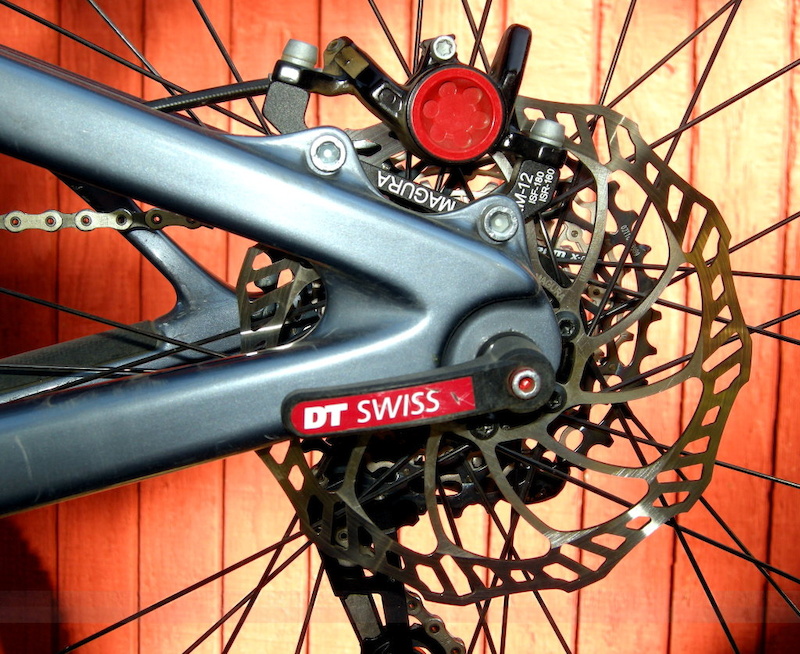
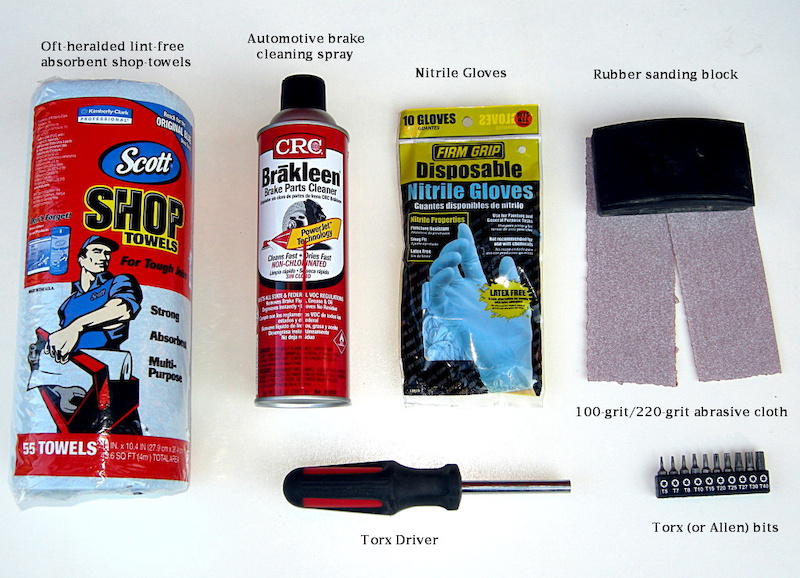

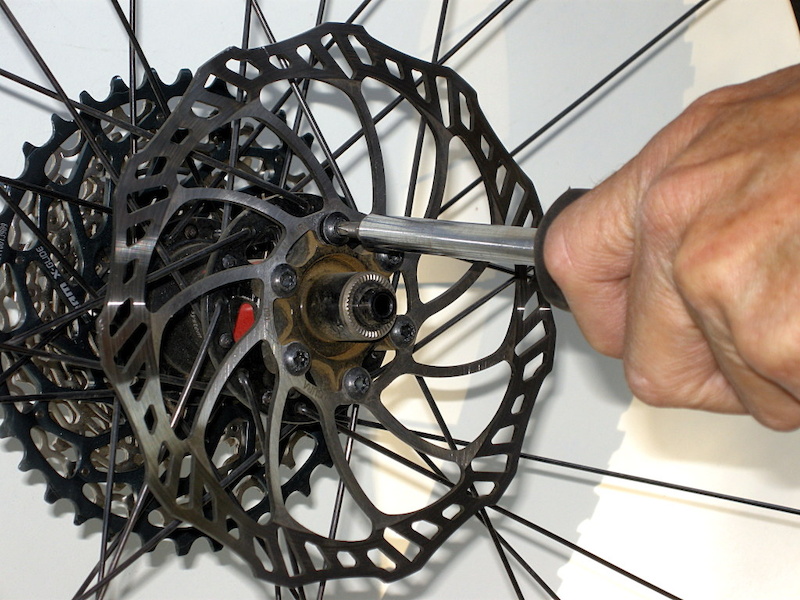
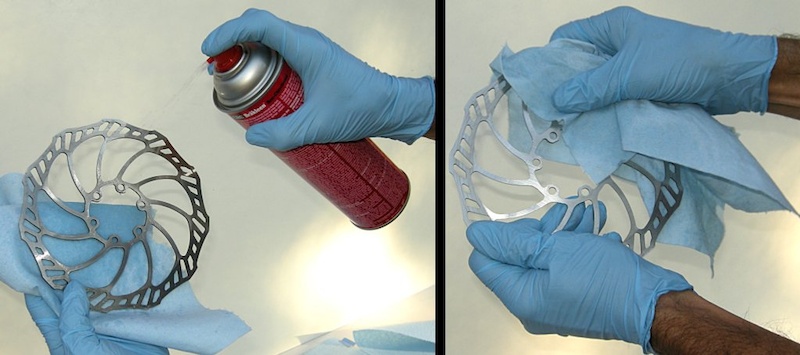

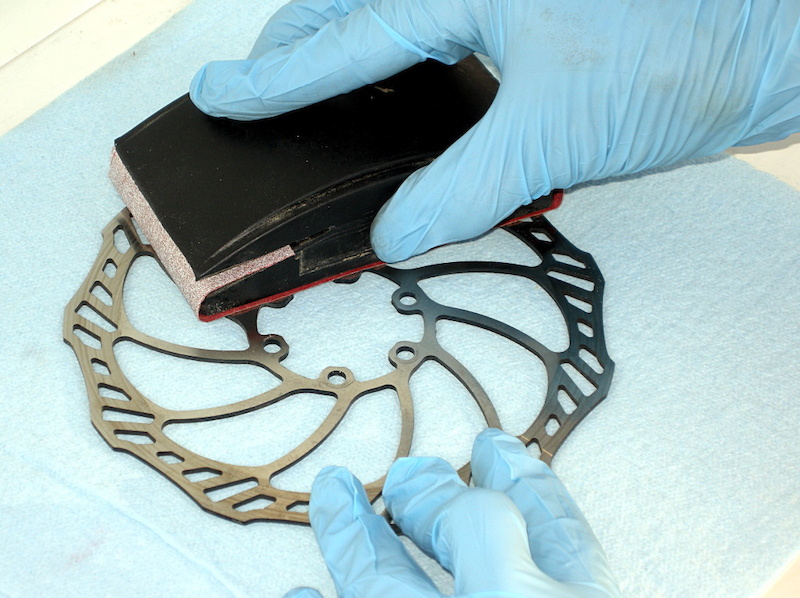
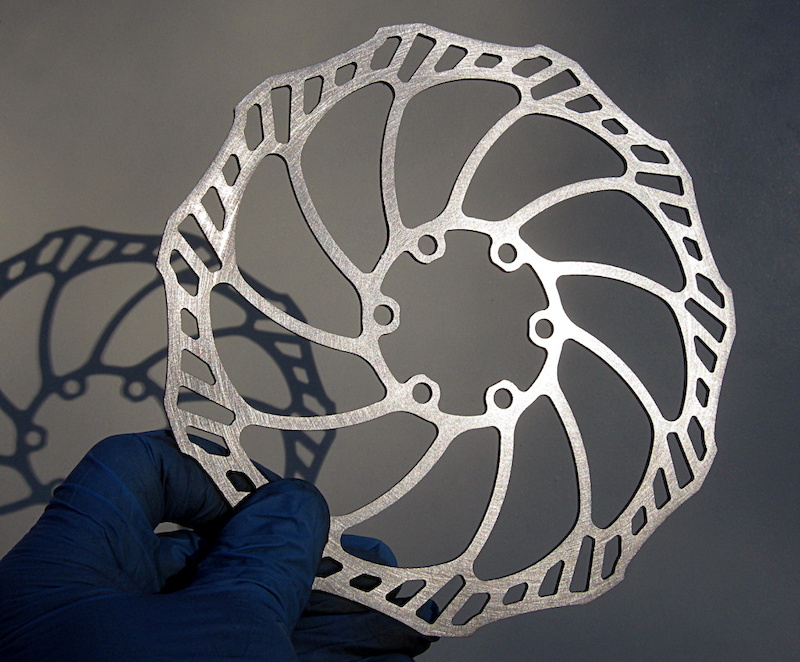
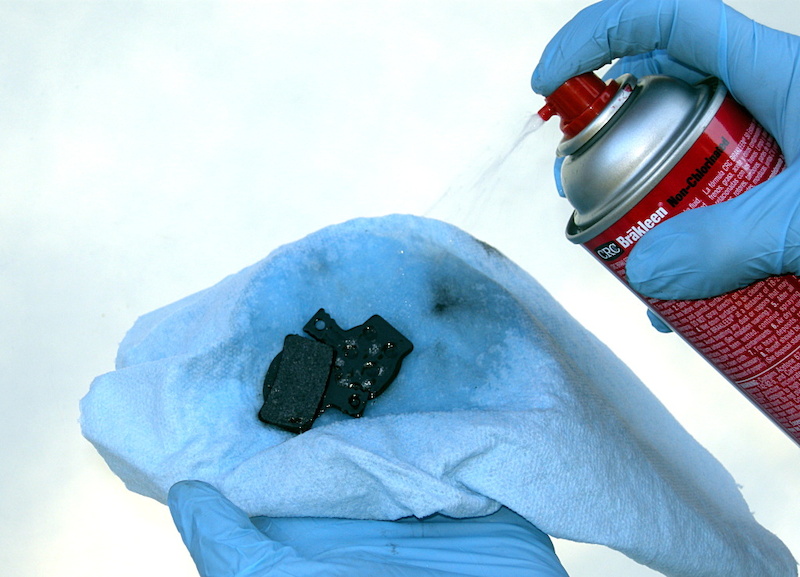
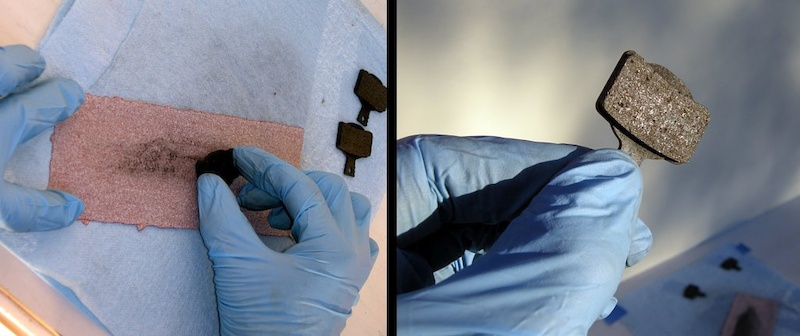

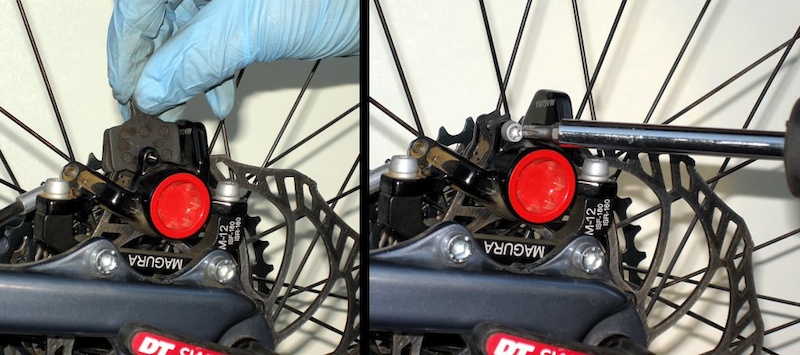
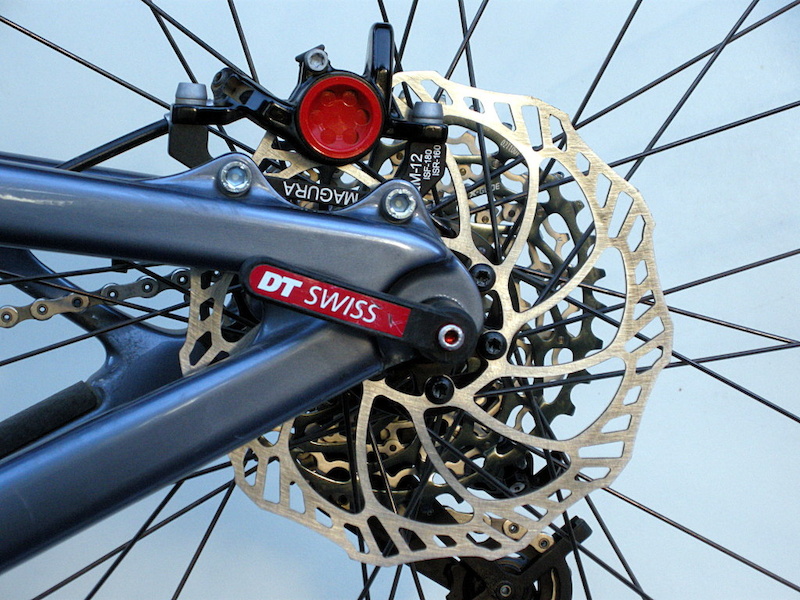

 Отправить другу ссылку на эту запись
Отправить другу ссылку на эту запись
